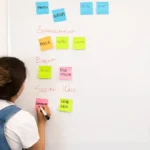So, yesterday I was chatting with Jake, a marketing whiz at a software company, about something that’s been on my mind a lot lately: How can we really squeeze every last drop of potential out of LinkedIn Learning? I mean, it’s a goldmine, right? But are we truly digging deep enough?
We were discussing how so many companies, ours included at times, see LinkedIn Learning as purely an employee training platform. Which, don’t get me wrong, is fantastic! Upskilling the team is vital. But Jake made a brilliant point: Why not leverage it for lead generation and content marketing too?
“Think about it,” he said, stirring his coffee, “everyone’s on LinkedIn looking to improve themselves, learn new skills, stay ahead of the curve. What if we could tap into that directly?”
And that got me thinking about the strategy of creating content and leveraging it for content marketing.
Skill Development as a Lead Magnet: The Core Idea
Jake’s suggestion revolved around creating LinkedIn Learning courses or learning paths that directly address industry trends and challenges. Not just generic stuff, but really targeted content that speaks to the pain points of our ideal customer. So, for a software company, that might be a course on “Advanced Data Visualisation Techniques for Marketing Analysts” or “Mastering AI-Powered Chatbots for Customer Service”.
His killer idea? Offer a free introductory module or a free taster session, or even just a couple of modules for free. This acts as a powerful lead magnet. People get a taste of your expertise, see the quality of your content, and are far more likely to engage further with your company.
Tracking Performance: Metrics That Matter
Of course, this all sounds great in theory, but how do you actually measure the ROI? That’s where the tracking comes in. Jake highlighted a few key metrics:
- Course Completion Rates: “This is the obvious one,” he said, “but it tells you a lot about the relevance and quality of your content. Are people sticking with it? If not, why?”
- Engagement Levels: Look at things like time spent on each module, number of comments, and questions asked in the course forum (if you have one). High engagement suggests the content is resonating with the audience. Even if they don’t purchase additional materials.
- Website Traffic: This is crucial. Include calls to action within your course content, directing learners to your website. Track the traffic coming specifically from LinkedIn Learning. Tools like Google Analytics can help you set this up. Consider utm parameters within the URL used to direct viewers so you can measure effectively.
- Lead Generation: The ultimate goal! Track how many people who start the free module eventually become leads – whether they sign up for a webinar, download a resource, or request a demo. It is a must to ensure that your are properly able to track performance of any campaign undertaken.
Optimizing Content and Marketing: Data-Driven Decisions
Jake stressed that it’s not enough to just track the data; you need to actually use it to improve your approach.
- Content Optimization: If completion rates are low for a particular module, revisit the content. Is it too technical? Not engaging enough? Is it too long? Based on data you can amend the style, presentation, or delivery method. Collect feedback using surveys, questionnaires, or even just asking for quick comments within the course.
- Marketing Adjustments: If you’re not getting the website traffic or lead generation you expected, experiment with different calls to action. Try different messaging. Promote your course more strategically on LinkedIn. Do not be afraid to test and adjust as you develop and promote your course.
Innovative Engagement Strategies:
Beyond just creating and tracking the courses, Jake had some great ideas for boosting engagement:
- LinkedIn Groups: Create a LinkedIn group specifically for learners taking your courses. This fosters a community, encourages discussion, and provides a direct line of communication.
- Live Q&A Sessions: Host live Q&A sessions with the course instructor, answering questions and providing additional insights. This adds a personal touch and builds trust.
- Content Upgrades: Offer exclusive content upgrades (e.g., templates, checklists, case studies) to learners who complete the course. This incentivises completion and provides additional value.
- Personalized Follow-up: Segment your learners based on their course activity and send targeted follow-up messages. Offer personalized recommendations or invite them to relevant events. It is important to segment your audience by their interests, so as to provide relevant, interesting content that will lead to sales, not a negative impression.
It’s crucial to remember that understanding your target audience and their interests is paramount. What are their biggest challenges? What kind of content do they find most valuable? Tailoring your courses and marketing efforts to their specific needs will significantly improve your results.
So, overall, Jake and I concluded (okay, I concluded, he just provided all the brilliant ideas!) that LinkedIn Learning, when strategically used, can be a powerful tool for not just employee training, but also for lead generation, content marketing, and establishing your company as a thought leader in your industry. We both agreed that creating tailored modules and offering teasers would be key to increasing leads, provided we collect and react to the proper data.











